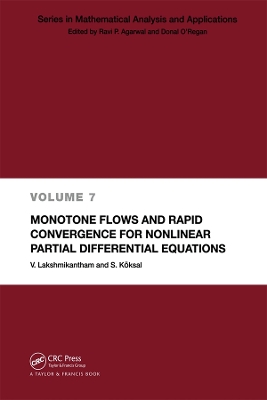Mathematical Analysis and Applications
3 total works
Theory of Fuzzy Differential Equations and Inclusions
by V. Lakshmikantham and Ram N Mohapatra
Published 20 March 2003
Fuzzy differential functions are applicable to real-world problems in engineering, computer science, and social science. That relevance makes for rapid development of new ideas and theories. This volume is a timely introduction to the subject that describes the current state of the theory of fuzzy differential equations and inclusions and provides a systematic account of recent developments. The chapters are presented in a clear and logical way and include the preliminary material for fuzzy set theory; a description of calculus for fuzzy functions, an investigation of the basic theory of fuzzy differential equations, and an introduction to fuzzy differential inclusions.
Method of Variation of Parameters for Dynamic Systems presents a systematic and unified theory of the development of the theory of the method of variation of parameters, its unification with Lyapunov's method and typical applications of these methods. No other attempt has been made to bring all the available literature into one volume. This book is a clear exposition of this important topic in control theory, which is not covered by any other text. Such an exposition finally enables the comparison and contrast of the theory and the applications, thus facilitating further development in this fascinating field.
Monotone Flows and Rapid Convergence for Nonlinear Partial Differential Equations
by V. Lakshmikantham and S. Koksal
Published 27 February 2003
A monotone iterative technique is used to obtain monotone approximate solutions that converge to the solution of nonlinear problems of partial differential equations of elliptic, parabolic and hyperbolic type. This volume describes that technique, which has played a valuable role in unifying a variety of nonlinear problems, particularly when combined with the quasilinearization method. The first part of this monograph describes the general methodology using the classic approach, while the second part develops the same basic ideas via the variational technique. The text provides a useful and timely reference for applied scientists, engineers and numerical analysts.


